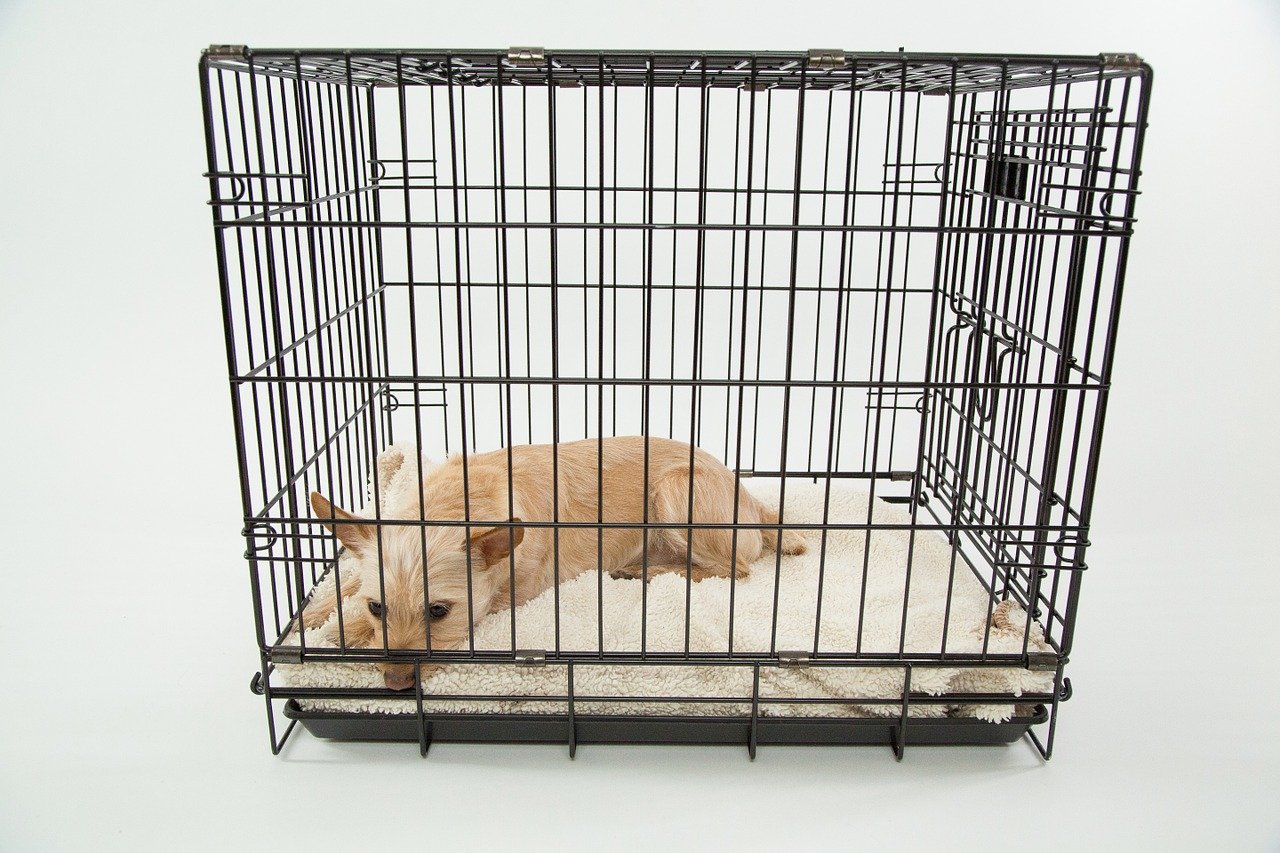For most puppy owners, crate training is a savior. Having a happy dog in an enclosed location while you’re out can eliminate the need for frequent clean-ups. Crate training, on the other side, is good for you and your pooch. The majority of dogs prefer “cave-like” surroundings in which they feel safe and secure. A crate can fulfill this need for them if properly introduced and set up.
The Do’s when crate training a dog are: find the right crate size, create a pup’s space, and give treats and praise. Also, leave him with toys and be persistent. The don’ts when crate training a puppy are; using the crate for punishment, using an over/undersize crate, forcing the dog in the crate, leaving him with bones, relying on the crate, giving up, and using pee pads.
Crate Training Dos And Don’ts
Do find the right size
Choosing the appropriate crate size will make your dog feel secure and at ease, as if it were their place. If your dog is still growing, start with a crate that is a little too big so you don’t have to replace it for the first couple of years. Some animal shelters even allow you to rent boxes so that you can upgrade as your puppy develops.
Don’t use a crate that’s too big or small
Your dog will be unable to stand up and stretch its legs if the crate is too small. If your crate is too big, your dog will be able to go to the restroom at one end and retire to the other. Their container should have a good balance; they should be able to move around freely.
Do create a “pup” space
In familiar, contained situations, most dogs feel protected. Show them a crate where they can relax and feel safe, rather than a container that is stark and empty.
They’ll feel right at home if you put a bed inside the crate and cover it with a blanket. Keep the door open while you’re there so the kids may explore on their own. Instead of sleeping on the sofa or even in your lap, they may choose to sleep in the kennel.
Don’t use the crate as punishment
Putting your pooch in their crate as punitive action is the quickest way for them to associate “crate time” with unpleasant experiences, which means they’ll never learn to love and accept it. Your dog should not be afraid of its crate. “Time out” areas should be placed in a completely separate area, away from the crate.
Read Also: How Many Hours Should A Dog Be In A Crate?
Do use treats and praise
Your dog should have happy experiences with its crate. To begin, use tasty goodies to get them inside the container. Begin by enticing them into the crate with healthy treats. Reward them with another once they’re completely inside. When your dog enters the crate on its own, always give them a good reward.
Don’t force your dog inside
Forcing your dog to stay in the crate will make them fearful and anxious. As quickly as they’re shoved inside, they’ll want to fight. The container will be related to punishment in their minds.
Allow your dog to enter the crate on his own. In this case, patience and a lot of praise are required.
Do leave toys in the crate
Your dog’s crate should always be associated with happy experiences. Leaving them alone for the entire day without any mental stimulation can result in separation anxiety and acute boredom. Leave puzzle toys inside the cage to keep them occupied all day You may even build your own and switch them out every day
Don’t leave them with bones
Toys with treats are fun, but choosing to leave a bone in your dog’s crate unattended can be dangerous( e.g. rib bones). Chewing time with bones should be done in little increments, with you monitoring to make sure they don’t swallow whole chunks or eat too rapidly.
Keep in mind that their safety should always come first. If you’re intending to leave a bone in one‘s crate, ensure you’re close by to keep an eye on them
Do transition away from the crate
Your ultimate goal should be to feel at ease leaving your dog in a larger location, such as a locked room in your house, at some point. Switch away from the crate when your dog understands not to chew or destroy your things, so they have more room to move around while you’re gone
Don’t Rely On The Crate
If putting your dog in a crate is the only method to protect them from destroying your home, something is wrong. Rather than depending on the box to keep kids from making a mess, address the root of the problem. Were they never potty-trained properly? Is boredom or separation anxiety a problem for them?
Do be Persistent
Nobody ever claimed crate training would be easy, but it may be made a lot easier if you know what to expect ahead of time. Not all puppies and dogs react to the crate in the same manner, and yours may push you to the point of giving up.
Don’t Give Up
To tell if you’re making progress, crate training must be done constantly for at least two weeks, and it can take up to six months before your dog is entirely satisfied with
Ensure that everybody else involved in crate training (or who may have an effect on the result), including children, is informed of the expectations.
Don’t Use Pee Pads In the Crate
One of the importance of crate training is to help in potty training. If you use pee pads in a crate, it will be hard to potty train him. Also, he will have a hard time using the potty area because he is only used to peeing on pads.
Conclusion
Crate training should be a pleasurable experience for you and your dog. It assures you that your dog is safe and none of your property will be damaged. By following the above crate training Dos and Don’ts you and your puppy will have great moments.


2 thoughts on “Crate Training Dos And Don’ts”